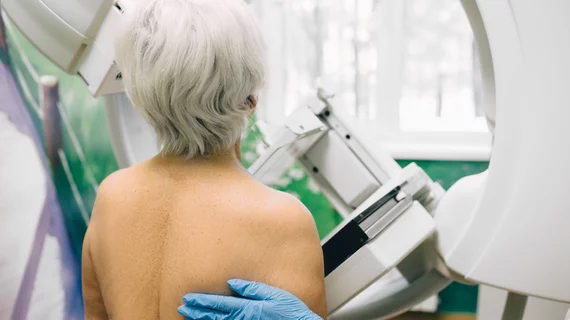New data on false positive rates for DBT and DM screenings
Digital breast tomosynthesis exams produce fewer false positive results than standard two-dimensional mammography, though not substantially, experts shared recently in JAMA Open Network.
After analyzing almost 3 million mammographic images, researchers found that over a cumulative span of 10 years, women who underwent digital breast tomosynthesis (DBT) exams were recalled due to false positive results 6.7% less often than individuals who completed digital mammography (DM) exams. This figure was more pronounced, however, when women completed biennial versus annual screening.
“Early breast cancer detection via screening mammography is a key strategy to decrease breast cancer morbidity and mortality,” Thao-Quyen H. Ho, MD, from the Division of Biostatistics at the University of California Davis School of Medicine, and co-authors wrote. “However, mammography results in notable harms, including false-positive results, that lead to unnecessary additional imaging and biopsy procedures, financial and opportunity costs, and patient anxiety.
With digital breast tomosynthesis systems accounting for almost half of all breast imaging systems in the U.S. now, many radiologists are opting for DBT as their screening modality of choice. Several studies have indicated that DBT exams produce fewer false positives and recall rates compared to digital mammography, but the authors of the study noted that in order for these figures to be truly reliable, multiple screenings over a span of many years are necessary.
The researchers sought to assess the cumulative risk of women receiving at least 1 false-positive recall for further imaging after 10 years of annual or biennial screening with DM versus DBT. This analysis included screenings performed between January 1, 2005, and December 31, 2018, at 126 radiology facilities in the Breast Cancer Surveillance Consortium, totaling 2,969,055 examinations for 903,495 women.
Of the nearly 3 million exams, 15% used tomosynthesis. For the women who underwent annual DBT, the risk of receiving at least 1 false positive recall was 49.6% compared to 56.3% for individuals who completed DM exams. These figures dropped to 35.7% vs 38.1% for biennial screenings and were most pronounced in women with nondense breasts.
“Our study offers new information about the potential harms of repeated screening, which may be used to inform screening guidelines and decision-making between individuals and their physicians; however, it is important to weigh these and other potential harms with potential benefits of earlier diagnosis,” the authors explained.
More breast imaging articles:
Mayo Clinic offers new guidance on supplemental screening of women with dense breasts
3D mammography approaching 50% of breast imaging systems in the US
Breast cancer is overdiagnosed in 15% of screenings
The impact of state-level digital breast tomosynthesis coverage mandates
Digital breast tomosynthesis outperforms DM at detecting malignancy in developing asymmetries

